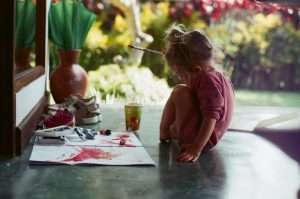Urban art association is an ongoing exchange of thoughts and ideas. A forum that draws together writers, artists, graffiti artists and enthusiasts to discuss the art of graffiti.
http://www.urbanartassociation.com/
The Art of Graffiti: A blog that discusses the history of graffiti.
http://www.graffiti-artwork.blogspot.com/
Graffiti Is The Voice Of The Street…The Art Of War… Check Out The Artistic Force Behind It All…
http://www.allcitywriters.com/
The World’s Best Graffiti Artist’s Blog…Interview’s, Pictures and More…
http://www.the305magazine.com/blog/the_305_graffitinews_blog___news_on_street_art__graffiti___muralism___and_other_artistic_forms/
This is a blog that talks about the history of graffiti art. It talks about graffiti artists and their works, with a special focus on street art. It is written for the urban art association and its audience.
The blog is written in a professional tone. The author writes with authority and clarity. They are well-informed about the topic and have strong opinions on it, so the writing appears opinionated at times, but it’s well-supported by evidence and examples. The author doesn’t try to be too clever or funny; they stick to making good arguments in support of their points of view.
There are photographs and video clips embedded into some posts, but not every post has them. There are also pictures of graffiti artworks, which are sometimes accompanied by brief descriptions of the artists’ motivations behind them. There doesn’t appear to be any advertisements on this site.
It has been many years since the term graffiti has been used to describe art. It is a shame that our culture has painted graffiti with such a bad brush as this word carries negative connotations. Graffiti is a way for youth to express their feelings and emotions without words. It is art without training or formal education. With this in mind, we should be encouraging young people to create art, not discourage them.
Graffiti is as old as man, dating back to prehistoric times when people wrote on cave walls in charcoal. As mankind developed so did his artistic expression; the Romans carved their history onto stone while the Egyptians left hieroglyphics behind them on papyrus. As the years progressed, graffiti evolved from primitive drawings and symbols into elaborate pieces of art.
Throughout time graffiti has followed the same cycle of life; from birth to decline, the importance of graffiti seems to rise and fall with the amount of people who practice it. The 1960’s were an era where graffiti flourished in New York City, but by 1971 it had all but disappeared for good.
Today we are seeing a rebirth of this ancient form of expression as groups like TATS CRU have made graffiti an accepted art form once again. We believe that if you give any person an opportunity to create
Graffiti is an artwork by which one may communicate with the people they share their community with. It is used to express one’s political views, religious beliefs, social views and even sexual feelings. The art form is commonly referred to as “Street Art”. Graffiti has been around since before the ancient times.
The word “graffiti” comes from the Italian word “graffiato” which means scratched. The term was first used in Ancient Rome referring to scratching on walls. The history of graffiti may be traced back to prehistoric times when cave paintings were created in caves and on stone surfaces. There are also references of graffiti being used to communicate on buildings during the Chinese Tang Dynasty (618-907) and in other countries like Italy, Greece and India. Graffiti tags have existed long before the modern era and have ranged from inscriptions of numbers or letters to full sentences in languages such as English, Spanish, French, German, Tagalog and Vietnamese.
Graffiti started off as a form of communication between two individuals that shared a community or a society but over time it became more than just a form of communication.
The urban art association was founded in 2002 by six graffiti artists who felt that the graffiti world needed an organization that could represent the industry to mainstream businesses and the general public. It has been recognized as a leading worldwide source of information on graffiti and street art culture.
NOW, UAA is a non-profit organization with regional chapters throughout the world, and is continually expanding to meet the needs of the industry. The mission of the urban art association is to provide a voice for its members and to promote and protect urban art culture in all its forms.
Artists spent time and money on their graffiti, so they may have been less anonymous than the letter writers. In addition, graffiti was often more visible than letter writing. It was created with spray paint which can be difficult to remove without expensive chemicals, or paint rollers which leave a very visible mark. Graffiti artists often chose dark colors that show up well at night when the city is illuminated by street lights.
Other people in the area may have known who did it because some of the best graffiti artists were also skilled at drawing freehand, and would sometimes draw pictures of themselves in their graffiti (see image). The writers were usually not professional artists, but they were aware of other kinds of art such as cartoons and commercial art.
The word “graffiti” comes from the Italian word “graffiare” which means “to scratch”. However, many different techniques are used to create graffiti. Stencils are commonly used by spray-paint graffiti writers to tag large areas without using up cans of spray paint quickly. Pieces can also be done using stickers or stencils to add color to any flat surface including walls, trains, light posts, billboards and even vehicles. An artist can use a single color or multiple colors when creating their work.
Graffiti is a form of artistic expression that is in direct conflict with the dominant culture.
As long as there has been art, there has been graffiti. The earliest examples of cave painting are thought to be graffiti. In ancient Rome, graffiti were carved into walls and buildings as a form of conversation or just plain vandalism. Graffiti in one form or another are found all over the world, from the Egyptian pyramids to Native American rock art to ancient caves in France.
The word “graffiti” comes from the Greek graffito, which literally means “scratching”. It applied to any markings made on a surface by scratching or engraving and was first used to describe the scratchings found on buildings in Rome.
Graffiti can be found anywhere and everywhere, but it is most commonly associated with urban areas where people live very close together and have little privacy. People tend to feel like they are part of a community when they see graffiti that others have created, even if the images themselves have no real meaning. It’s an interesting paradox: the more anonymous graffiti becomes, the more people enjoy it for its artistic value.
In fact, some artists use graffiti as an opportunity to convey their political or social messages anonymously. These kinds of messages may be


